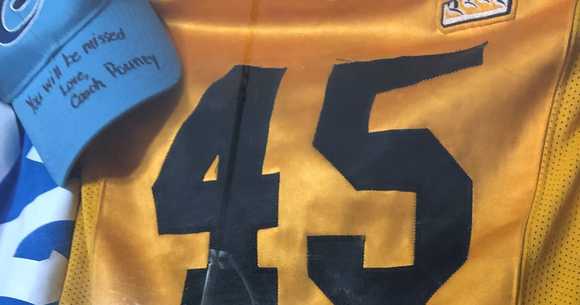A six-year-old boy, Eli, was run over and killed in Kentucky by a landscape truck. The truck was traveling 23 mph on a 25 mph street. The entire incident was captured on a nearby surveillance video.
The following is a step-by-step analysis showing how we helped the local family after the horrific loss. We were able to recover $3,000,000.00 which was the maximum insurance policy limit, without the need for a trial.
Hurdles to overcome
I. “Dart out defense”
Eli was traveling down a public parking lot ramp on his bike and entered a public street without warning. He came out from behind a parked car within a second of being struck. The police reviewed the video and decided that there was insufficient time for the driver to “perceive and react.” As a result, the police did not charge the driver with causing the death of Eli. The insurance company used this to deny all liability.
II. Blame on mother
A number of people blamed Eli’s mom for permitting him to ride his bike across the public street and not wear a helmet. She is a good mother but numerous people briefed on the matter had questions about her potential fault in the incident.
III. Cough syrup defense
Blood was taken and the driver tested positive for methamphetamine following the crash. The lab, however, did not differentiate between benign methamphetamine and the illicit street drug of methamphetamine. The driver and his lawyer argued that the meth found in his blood was benign and could have been caused by over-the-counter medication. They said that the driver never used the illegal drug. The driver was not convicted of driving under the influence as a result of this defense despite the blood work.
Facts and information we used to warrant full recovery
I. Federal Motor Carrier Safety Administration Regulations
The truck had a gross vehicle weight rating (GVWR) of 19,000 pounds which means the vehicle must comply with all Federal Motor Carrier Safety Administration (FMCSA) regulations for commercial vehicles. FMCSA regulations are designed to protect us all from dangerous drivers. The owner of the landscape company failed to comply with FMCSA regulations. In fact, he claimed he was not aware that his company had any duty to comply with these safety rules.
II. Methamphetamine use – illicit street drug
Despite the defense used in the criminal case which gave rise to a dismissal of the drugged driving charge, we pursued the use of methamphetamine through expert testimony and additional lab testing. We engaged three experts across multiple states to re-analyze the blood sample and testify with certainty that the driver was impaired. Peer reviewed medical articles confirmed our assumption that the driver was impaired and that the meth was not benign. A lab expert, two toxicologists and a forensic pathology consultant were retained to build up this part of the case.
III. Focus group
We conducted a videotaped focus group with two separate groups of participants who reviewed the videotape of the incident and facts surrounding it. The participants were taken from the same county were the case was pending (conservative county in Kentucky) and the focus group was conducted in an objective manner. Ninety-percent of the participants placed all the blame on the company or its driver. The focus group participants also assessed damage in excess of $10 million.
IV. Accident reconstruction
We hired an accident reconstruction expert and forensic video expert to analyze the scene, surveillance video, and perception reaction time. We found that the driver had an opportunity to observe Eli before he passed in front of the parked car. The ability to see Eli prior to his passing in front of the parked car changed the “perception / reaction” analysis.
V. Witnesses and investigation
We spoke with a number of potential witnesses as we prepared for trial and more depositions, including the police officers who investigated the incident, a former landlord from the at-fault driver, and people who lived in the neighborhood. We also did a comprehensive background check on the at-fault driver and landscape company.
A former landlord for the driver indicated that he had been evicted for using drugs. The driver and the insurance company failed to disclose this prior address but Daphne Mahle in our office tracked down the landlord through information that was received through a background check. The background check confirmed that the driver was a drug addict with a long record who should have never been behind the wheel of a commercial motor vehicle. The landscape company owner claimed he was oblivious to most of this information.
Insurance pressure point – bad faith
Even after the lawsuit was filed, the insurance company denied all liability and initially refused to mediate. We showed the company and its lawyers our experts’ findings, the focus group information, and the landlord and witness testimony. We gave the insurance company a time limited demand for policy limits after sharing all of our information. We told the company that if they did not pay the full amount within our set deadline, we would never give them an opportunity to settle within the insurance limits again and we would push the case to trial. We anticipated a jury verdict in excess of the policy limits.
Ultimately, we were able to settle the case for the entire $3 million policy without the risk of trial. The insurance company owed a duty to the landscape company – its insured – to pay the policy limit so that it did not expose the landscape company to an excess verdict (over policy limit) which could lead to bankruptcy.

Eli’s mother is going to structure a large portion of the settlement and use some of the funds to sponsor kids on Eli’s former football team who cannot afford cleats, jerseys, and other costs required to play.
There are very few attorneys who successfully handle commercial truck and commercial policy cases. Please contact us any time for a free consultation.

